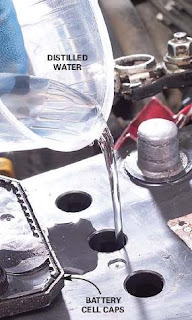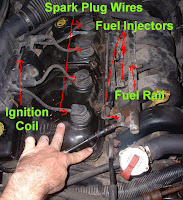Changing fuel filter must be easy for you now, but you need to keep a check to avoid any mishappening or any mistake. Since every process has few 'Do's & Don'ts, so does the procedure of replacing fuel filter has. A glance at these instructions would definitely ensure safer fuel replacement process. Read on to find the "Do's & Dont's While Replacing Fuel Filter."
Do's While Replacing Fuel Filter
Make sure to drain the fuel tank before removing it for cleaning.
Always keep in mind that the fuel to be used should be in a sealed container.
Its important that automobile battery should be disconnected before starting the process. The failure in which will lead to accidental sparks that could be dangerous.
Check the filter to ensure that it does not leak and is snug. Usage of gasket sealer to filter threads helps in a leak-free connection.
Cross check the hose clamps for their position. Make sure they are properly positioned as well as tight.
Don'ts While Replacing Fuel Filter
No Smoking – Never smoke while you are repairing or replacing the fuel filter. It is advised that you should also keep away all kinds of electrical systems to avoid any damage to them as well as any harm to yourself.
advised that you should also keep away all kinds of electrical systems to avoid any damage to them as well as any harm to yourself.
At the time of replacing fuel filter, one needs to tighten the screws into inlet fitting on carburetor. While doing so, never overtighten it. You might damage the threads in carburetor.
Never use RTV silicone sealer that dissolves in gasoline to prevent leakage. Even teflon tape should also be avoided.
Try not to bring in use old rubber hoses at the time of replacing in-line filter.
Do's While Replacing Fuel Filter
Make sure to drain the fuel tank before removing it for cleaning.
Always keep in mind that the fuel to be used should be in a sealed container.
Its important that automobile battery should be disconnected before starting the process. The failure in which will lead to accidental sparks that could be dangerous.
Check the filter to ensure that it does not leak and is snug. Usage of gasket sealer to filter threads helps in a leak-free connection.
Cross check the hose clamps for their position. Make sure they are properly positioned as well as tight.
Don'ts While Replacing Fuel Filter
No Smoking – Never smoke while you are repairing or replacing the fuel filter. It is
 advised that you should also keep away all kinds of electrical systems to avoid any damage to them as well as any harm to yourself.
advised that you should also keep away all kinds of electrical systems to avoid any damage to them as well as any harm to yourself.At the time of replacing fuel filter, one needs to tighten the screws into inlet fitting on carburetor. While doing so, never overtighten it. You might damage the threads in carburetor.
Never use RTV silicone sealer that dissolves in gasoline to prevent leakage. Even teflon tape should also be avoided.
Try not to bring in use old rubber hoses at the time of replacing in-line filter.








